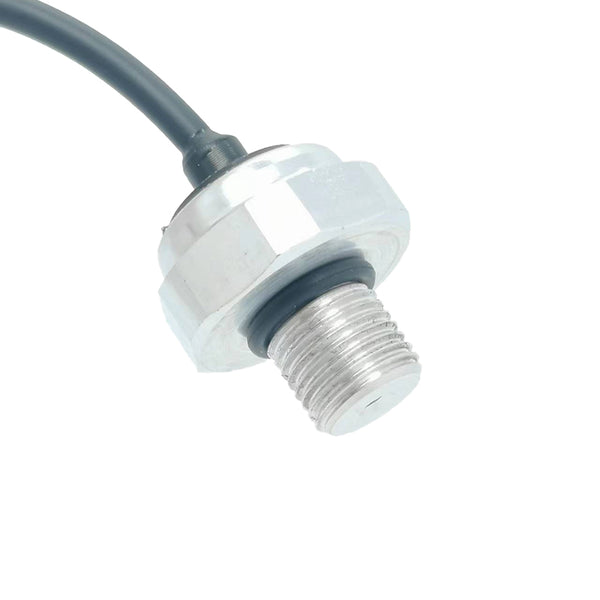In the world of industrial control and monitoring, pressure transducers play a pivotal role, serving as silent observers of fluid dynamics. These ingenious devices measure the force exerted by fluids on their surrounding surfaces, providing crucial information for applications ranging from flow control to altitude monitoring.
Analyzing the Mechanics of How a Pressure Transducer Operates
At the heart of a pressure transducer lies a force collector, often in the form of a flexible diaphragm. This diaphragm undergoes deformation when subjected to pressure, initiating a series of events that culminate in the generation of an electrical signal. This transduction process is finely tuned to meet the specific requirements of the measured process.
The most common constructions of pressure transducers incorporate a force collector, such as a flexible diaphragm, and a transduction element that utilizes resistive, capacitive, or inductive methods to translate deformation into an electrical signal. The choice of the electrical device determines the components employed in constructing the pressure sensor.
The parts of pressure transducer Transducer Components
Pressure transducers primarily employ strain gauges to measure the force acting upon them. As the fluid imparts pressure, the strain gauges undergo deformation, leading to a change in voltage. This voltage alteration forms the basis of pressure measurement, with the magnitude of change corresponding to the intensity of the pressure.
Advanced versions of pressure transducers may opt for capacitance or piezoelectric sensors instead of strain gauges, chosen based on factors such as the measurement range, environmental conditions, and required precision.
Managing Static Pressure Transmitters:
Static pressure transducers specialize in measuring fluid pressure at rest. As the fluid exerts pressure on the transducer, the embedded strain gauge deforms, causing voltage variations. The magnitude of these variations directly correlates with the applied pressure. Once the pressure subsides, the strain gauge returns to its original state.
It's worth noting that piezoelectric pressure transducers operate differently, focusing on real-time pressure variances rather than static pressure.

Differences in Pressure Transducer Technologies
Piezoresistive Strain Gauge Pressure Transducer:
A typical piezoresistive strain gauge pressure transducer utilizes strain gauges bonded to a flexible diaphragm. Pressure-induced deformation in the diaphragm changes the resistance of the strain gauges, configured as a Wheatstone bridge, resulting in a usable electrical signal.
Capacitance Pressure Transducer:
This variant features a capacitive plate (diaphragm) and a fixed capacitive plate (electrode) with a gap between them. Changes in pressure widen or narrow the gap, altering capacitance. The variation in capacitance is then converted into a usable signal.
Types of Pressure and Their Measurement:
Absolute Pressure:
Measures pressure relative to a perfect vacuum, utilizing absolute zero as a reference point. Barometric pressure transducers exemplify this category.
Gauge Pressure:
Measures pressure relative to atmospheric pressure. Tire pressure sensors and vacuum sensors fall into this category.
Differential Pressure:
Measures the difference between two pressures on each side of the sensor. Liquid pressure transducers, measuring fluid levels above and below the liquid, are an example.
Diverse Signal Outputs: Tailoring to Specific Needs
Digital Pressure Transducer:
Offering versatility with digital signals, these "smart" devices provide enhanced functionality, including location description, calibration data, event logging, anomaly detection, and alarm activation. The choice of communication protocol is critical, with options available for extended transmission distances.
Millivolt Output Pressure Sensor (Ratiometric):
Directly proportional to the transducer input power, these sensors are suitable for short distances, low electrical noise environments, or harsh conditions, thanks to their compact design and lack of signal conditioning.
Voltage Pressure Transmitter:
Outputting at 0–5 Vdc or 0–10 Vdc, these sensors offer a higher output than millivolt transducers. They are less susceptible to electrical noise, making them ideal for industrial environments.
mA Output Pressure Transmitter:
The most common output, ranging from 0 to 4 mA to 20 mA, designed for environments with high electrical interference or long transmission distances exceeding 1000 feet.
In conclusion, the world of pressure transducers is a fascinating realm where mechanical deformation translates into electrical signals, offering invaluable insights into fluid dynamics. Whether measuring static pressures or dynamic variations, these devices continue to evolve, meeting the diverse needs of modern industries.



Leave a comment